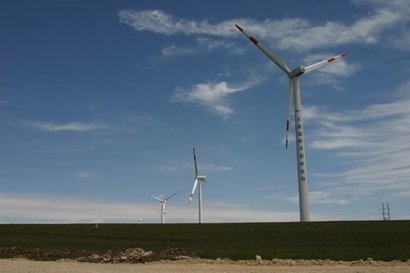
What wind farm projects often need is a cohesive public affairs strategy that takes into consideration that invariably, some level of opposition will likely occur to a project, and waiting for that moment to act is already putting your project one step behind. Wind farm projects are not defeated because they are bad projects. They are defeated for a myriad of other reason, often led by fear tactics of the opposition, lack of public outreach by the developer, and project approval being stalled so long, that projects become financially not viable. Every month that goes by when approval of a project is "expected" but then delayed, results in numerous fees and costs that continue for the wind farm developers. Many opponents of projects know that "slowing is as good as stopping" in some cases.
Townships, counties and municipalities are also getting into the "slowing" movement of wind farm growth - with moratoriums. Moratoriums often allow communities to pause the development of wind farms while local zoning ordinances are rewritten or adjusted. The problem for wind farm developers is that these adjustments are almost always detrimental to siting wind projects. So now you need two public relations campaigns - one to educate the public on your actual project, and one to educate the public on the pitfalls of a moratorium. In my two decades of working on development projects, I have never seen a moratorium come "out of the blue". There is always a reason for such actions. So what are the best tools to promote your project, build support and avoid political defeat or stalling of a project?
GET DIGITAL – Use digital and grassroots campaign tactics to build support amongst members of the community and public officials. To kick off any digital campaign, prepare a thorough website that regularly updates residents, dispels new myths and disseminates new information. Website content should allow the audience to obtain key ideas on project details and benefits without having to do too much reading. Visuals and well-organized content are key to ensuring your message gets across. This website should also include a link that allows people to submit letters of support directly to public officials and elected leaders as well as provide downloadable fact sheets, and any other resources that may help advocates build support.
GET SOCIAL - Social media platforms such as Facebook and Twitter have grown into powerful campaigning tools. Facebook and Twitter accounts dedicated to the renewable proposal offer enormous opportunity to reach community members organically through peer-to-peer information sharing. Any content posted should be bolstered as needed by social media marketing, which is both cost efficient and effective to introduce the proposal to new audiences. These ads will increase awareness and drive website traffic to continuously reach new segments of the population.
With an effective digital strategy, supporters can be educated and harnessed to action. Citizen support makes a huge difference at public hearings, and key advocates can write letters, provide media quotes, offer testimonials, display lawn signs and more to show support throughout the approval process. Digital platforms allow supporters to stay updated on the most important times to take action as well as the most effective means to ensure their voices are heard.
GET TO THE STAKEHOLDERS - Contacting stakeholder groups both locally and regionally to coordinate grassroots efforts can amplify messaging through newsletters, email blasts, presentations to the organization’s members. Coordinating a call to action with stakeholders can greatly enhance support in a meaningful way.
Don't let your wind farm project succumb to delays, moratoriums and zoning defeat. Wind farm developers have many options, and a great story to tell.
Al Maiorino
President, Public Strategy Group
Al Maiorino, the President of Public Strategy Group, Inc.,is a public affairs executive presenting over two decades of success in his field.
Maiorino is a NIMBY expert, writer, and public affairs consultant who has made Public Strategy Group, Inc. a unique firm that goes beyond the traditional public affairs role of many firms. He has successfully run and won corporate campaigns involving land use difficulties, legislative advocacy issues for large and small companies ranging from Fortune 100 clients to smaller firms, and voter referendum campaigns.
He began his career as a political party operative and took the knowledge gained from a diversity of political campaigns to the corporate level over 20 years ago and formed Public Strategy Group, Inc. He has made PSG one of the few firms in the nation that specializes in building public support for development type projects, while also offering grassroots public affairs for corporate clients on legislative and regulatory issues. Throughout the years, he has managed hundreds of corporate public affairs campaigns in a variety of industries such as energy, gaming, shipping, tourism, cable television, retail development, auto racing, and housing/residential projects. His company has worked in twenty states, one U.S. Territory and three countries, and for over 20 years has helped companies gain approval on development projects totaling billions of dollars in investment.
He has authored many articles, and is a regular contributor to numerous trade journals and business periodicals.

